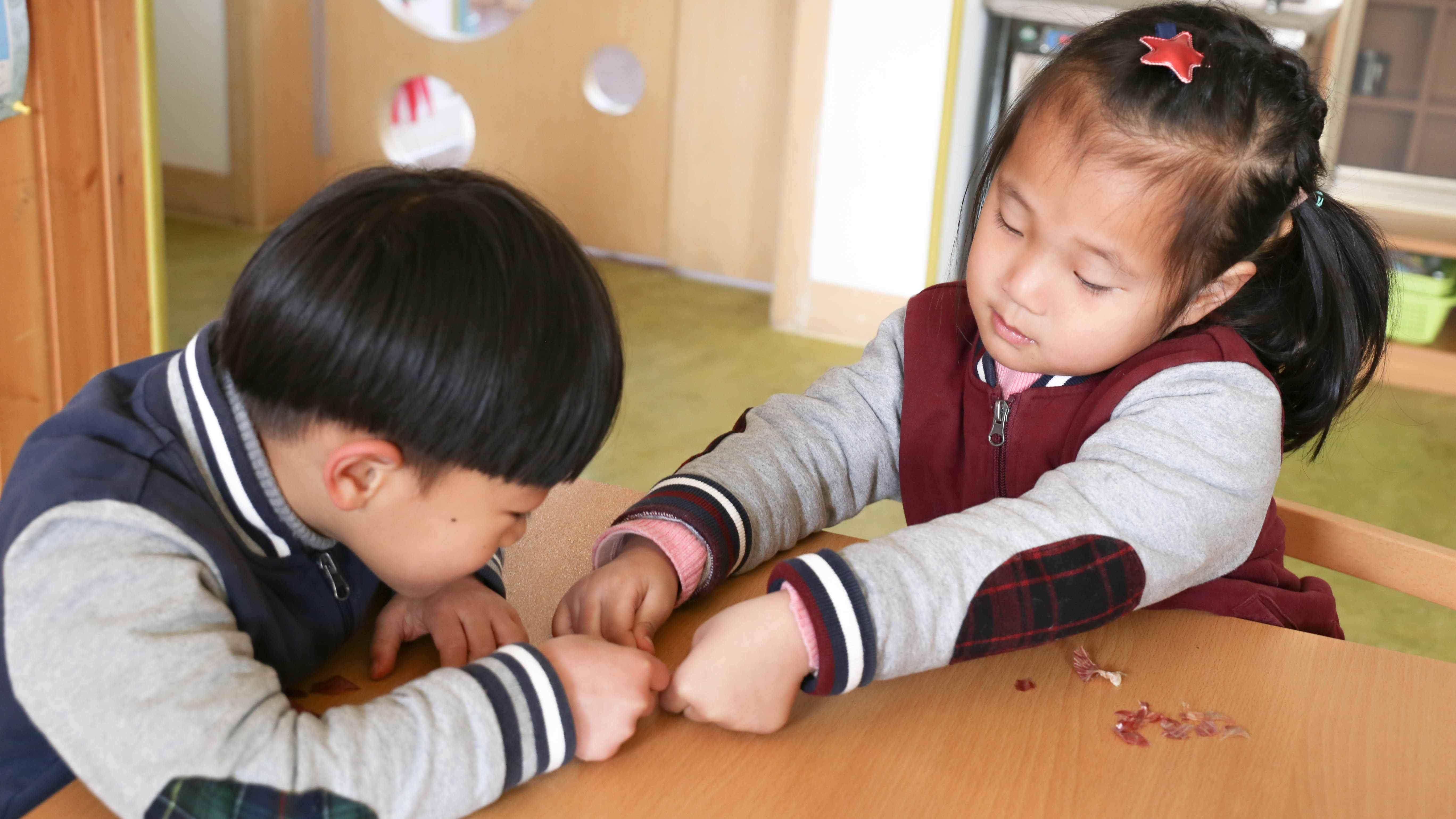
In the world around us, we see skyscrapers, the babble of running water, cars coming and going but there is microscopic world that we cannot see with our unaided eyes. The microscope is one of the greatest inventions of mankind in the Twentieth Century, which presents a new world in human vision. For the first time, people saw hundreds of "new" tiny animals and plants, as well as the internal structure of everything from the human body to plant fiber. Come with our K2-O children, let’s explore the "invisible world".


What does the world look like under the microscope? After a simple introduction of the microscope, children all clamored to observe the world under a microscope. "Curious" children were excited to begin a journey of micro world exploration.

"I see it, I see it, it looks like a small bubble!" Children observed butterfly wings, dragonfly wings, small rabbit villi, fish skin, pineapple villus, dandelion villus, lily pollen and celery leaf specimens. After their observations, children came to a conclusion: They can see a totally different world under the microscope and they also find out that different specimens have a very different look under the microscope.


After the quest, children jumped for joy like they had discovered treasure and told others what the micro world looks like.

Dragonfly wings Lily Pollen butterfly antenna pool water

Dandelion Elaeagnus pungens butterfly Wings butterfly scales
Look! Doesn't the world under microscope look beautiful? Do you know which one is butterfly’s scales?

The same object is different from the magnification of the microscope, and the world is not the same.


The children were not satisfied with the observations of specimens that have already been prepared and they want to look inside an onion. What will onions look like under a microscope? For K2 children, making a specimen ready to observe under a microscope is very difficult but under the guidance of the teacher they were willing to try again and again.


The children cover a clean glass slide with gauze and apply a drop of water. With a pair of tweezers they carefully peel a small sample of onion. It’s not easy for them! The onion sample is place on the water on the glass and it is spread carefully with a needle. A cover slide is placed on top and it is finished!



What is more interesting, after the painting, children played a guessing game. Guess what I painted and I guess what you have painted. The children referred to the specimen pictures and explained how there picture was the same to their friends. Some children drew four different specimens.

The world is mysterious and miraculous. From the beginning of birth, we began to explore the world. In Angel, we follow children's curiosity and eager footsteps, continue to explore the world around us and find more wonderful things every day.
